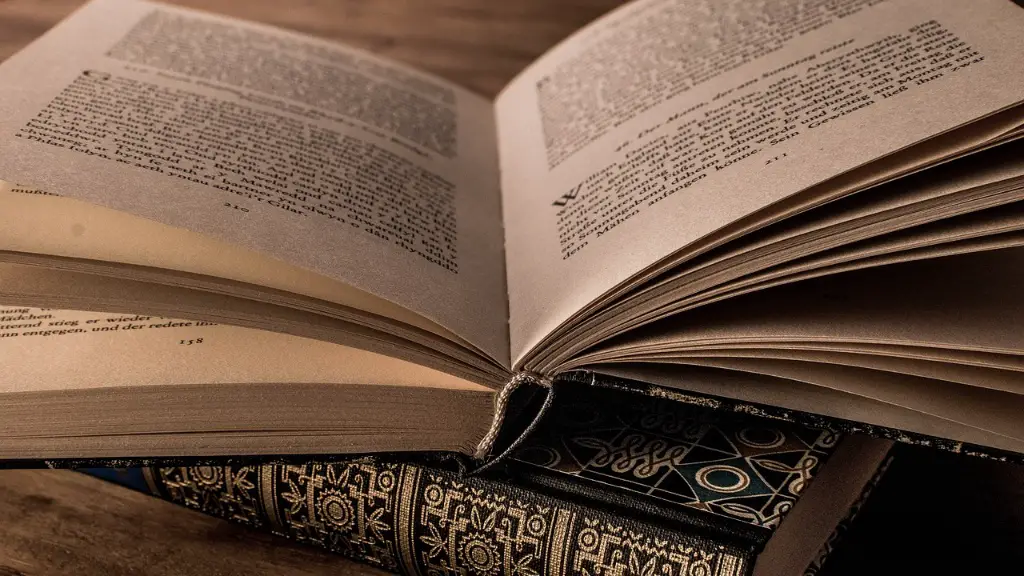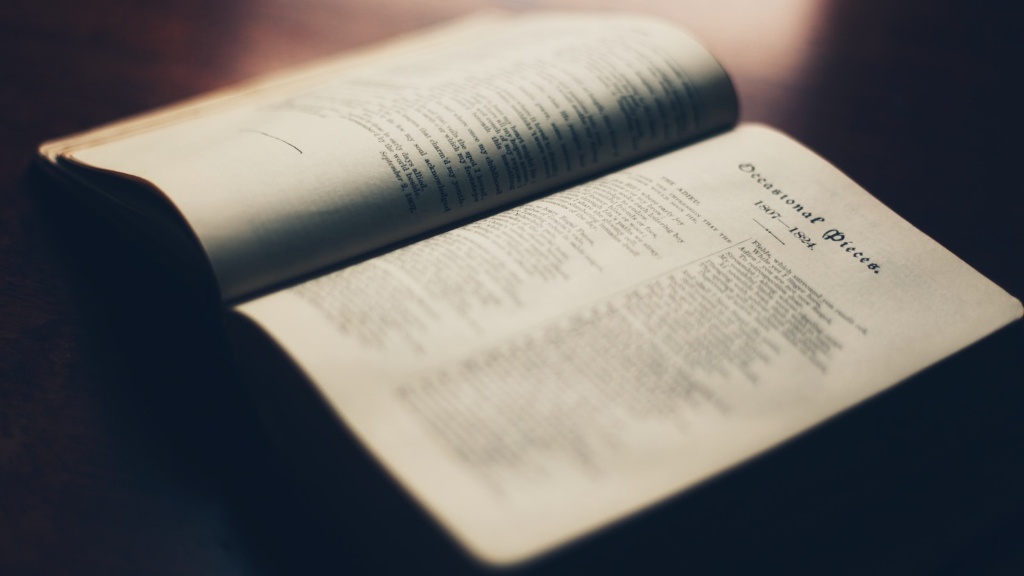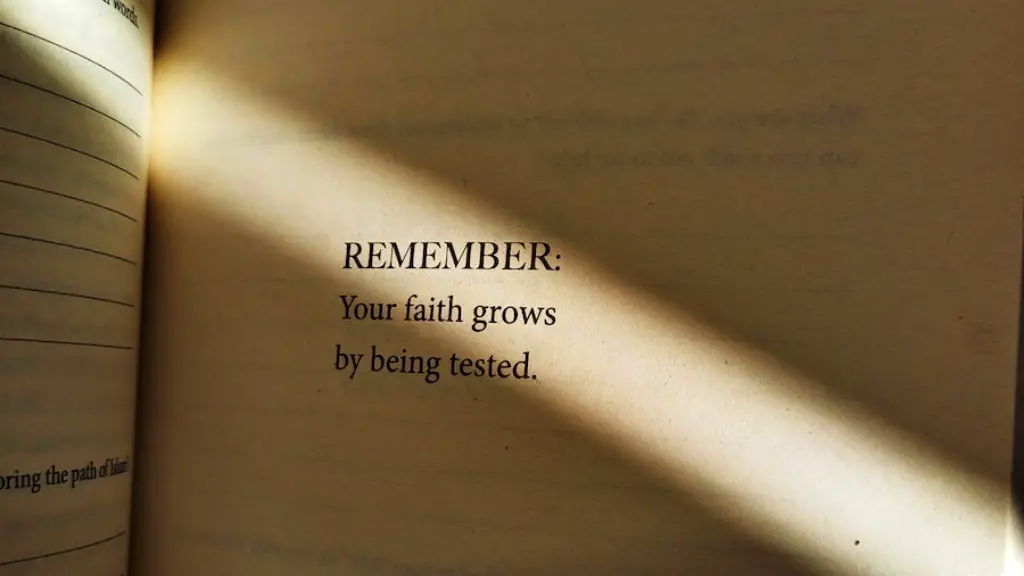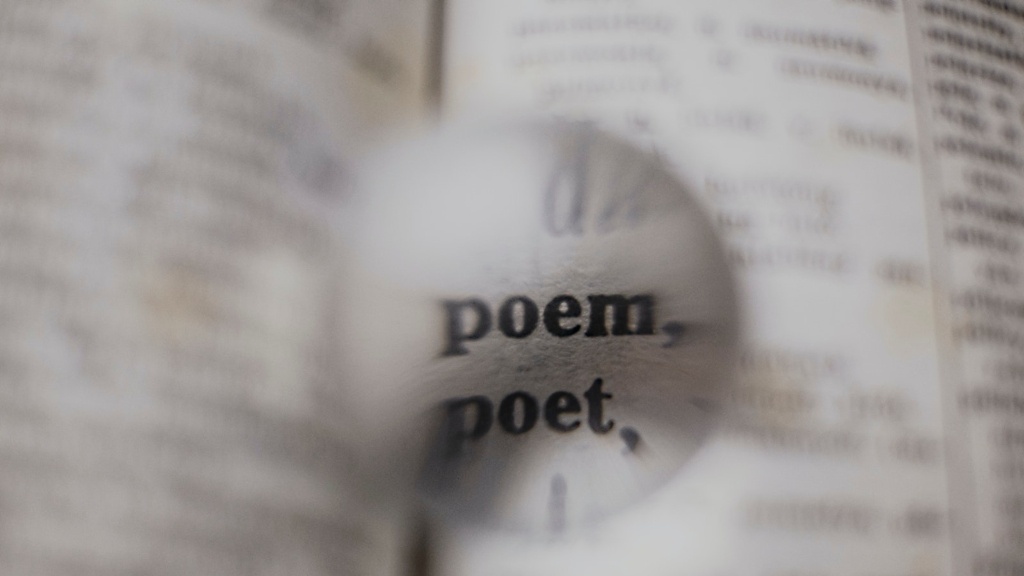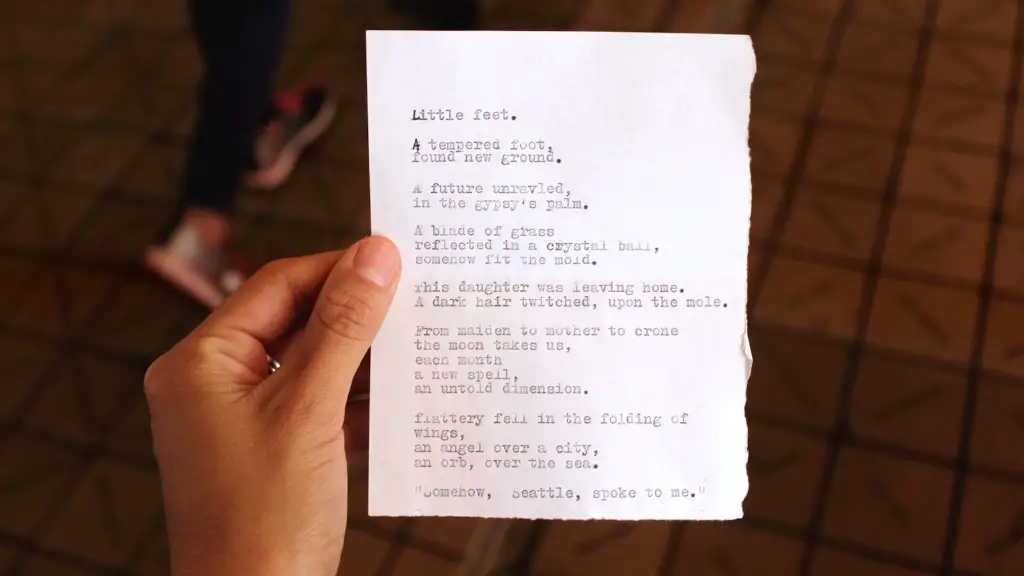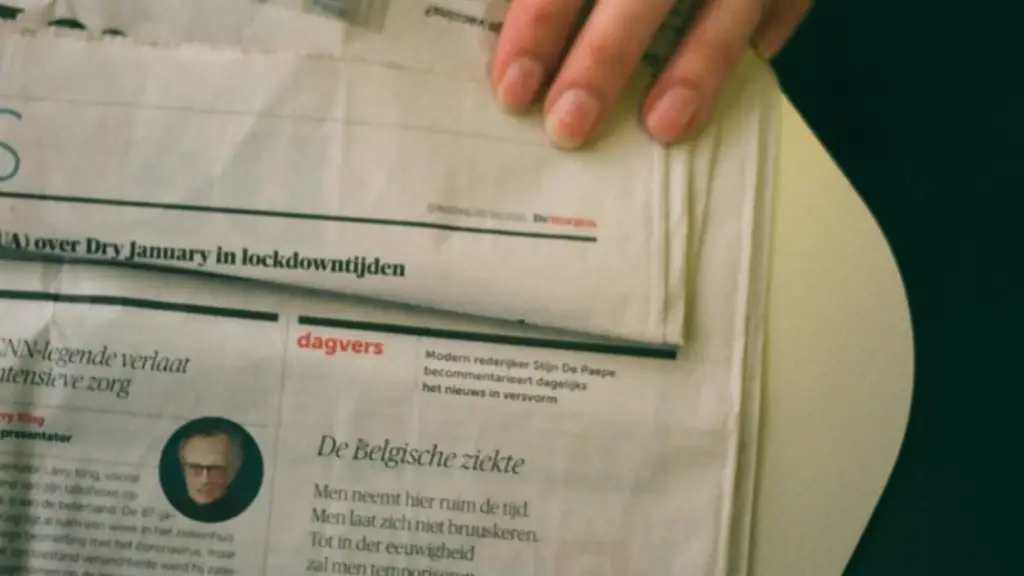Poetry is a unique form of art, combining language and emotions together in a way that conveys a universal meaning that can be interpreted differently. The use of form and structure enables poets to express themselves in a uniquely poetic way.
The form and structure of a poem are integral components in its creation. Form can be defined as the basic structure used to create a poem; it is the overall outline of the poem. Structure on the other hand, is the order of ideas and relationships in the poem. Through careful crafting of the structure, a poem can lead the reader on a journey of discovery, arrangement and understanding.
The traditional poetic form is largely based on the idea of metre, which is a measure of the rhythm of a poem. Metre is determined by the number and type of syllables in each line and the length of each line. There are many traditional metrical forms that have been used over the years including couplets, quatrains, sestets and sonnets.
However, contemporary poets are now challenging old conventions and creating new forms of poetry. These forms are often more free-flowing and less structured than traditional poetry and make use of visual elements such as images, colours, and shapes. Contemporary poetry can be thought of as an experiment in expressing a message, where poets are increasingly more willing to take risks and incorporate unconventional poetic devices into their works.
Form and structure in poetry can also be used to convey a particular emotion or feeling. Through carefully chosen words, phrasing, and patterned rhythm, poets can evoke emotions such as joy, sadness, or anger in the reader.
In addition to emotions, the form and structure of a poem can also be used to convey meaning. The poet may choose to use symbolism, connotations, and metaphors in order to add depth to their poem and help convey a particular message.
Overall, form and structure are essential components of poetry. Through its use, a poem can be brought to life and evoke powerful emotions in the reader. Every poem is unique, and the way its form and structure are used can help to create something truly special.
Meter
Meter is the rhythmic pattern of a poem, made up of stressed and unstressed syllables. Meter is an important element of form and structure in poetry, as it helps to create a recognizable melody and tempo in the poem. Many traditional poetic forms make use of meter, such as the iambic pentameter, which is the most common meter used in English poetry. However, contemporary poets often choose to break free from traditional conventions and create new forms of meter, such as the anapest, trochee, and dactyl.
When using meter, poets must be conscious of the number of syllables, the timing of their words, and the metrical pattern they are creating. Meter is often used to create patterns in the poem, which can be used to evoke specific emotions in the reader.
Rhythm
Rhythm is the flow and beat of a poem that gives it life and energy. Rhythm is created through meter, but also through other techniques such as line breaks, syllabic patterns, and the repetition of words or phrases. A poet can use rhythm to create a sense of excitement, drama, or calmness in their poem.
Through the creation of rhythm, the poet can also create patterns that are not necessarily tied to meter. For example the use of alliteration or end rhymes can create a sense of rhythm without relying on a metrical pattern. Rhythmic patterns can be used to create a sense of unity in a poem and to draw attention to particular lines or words.
Rhyme
Rhyme is a technique often used in poetry to create a musical, sing-song effect. It involves the repetition of words or syllables that have the same sound, usually at the end of lines. Rhyme can be used to create patterns in a poem, and to emphasize particular words or ideas.
There are many different types of rhyme, from end rhymes and internal rhymes to slant rhyme, consonance, and assonance. Each type of rhyme serves a different purpose, and poets must consider carefully how they wish to use rhyme in their poem. Rhyme can be used to enhance the rhythm of the poem, or to draw attention to particular words or lines.
Imagery
Imagery is the use of words and phrases to create vivid and powerful images in the reader’s mind. Watchful use of imagery can bring a poem to life, and help the poet bring their words alive. The use of metaphors, similes, and other figurative language can help the poet to convey powerful emotions and ideas in a single phrase or line.
In addition to figurative language, poets will often use sensory imagery to convey a message. The use of words that evoke the senses, such as taste, touch, smell, sight, and sound can help to bring the poem to life for the reader and make it more personally affecting.
Structure
The structure of a poem is how it is organized. Structure can include stanzas, line breaks, enjambment, and pauses. Structure is an important part of a poem as it shapes how the reader experiences the poem. Structuring a poem can help the poet to emphasize particular ideas or emotions and to lead the reader on a journey.
The structure of a poem can take many forms, from traditional forms such as a sonnet to more modern forms that are less structured. The poet must consider carefully how they wish to organize their poem, as this can have a powerful impact on its meaning.
Language
Language is the cornerstone of a poem and is essential to its success. The poet must carefully select words and phrases that best convey their meaning and evoke the emotions they wish to express. Poets will often use language to create emphasis and draw attention to particular ideas. This can be done through the use of adjectives, metaphors, similes, and other language techniques.
In addition to evoking emotion and creating emphasis, language can also be used to convey meaning. The poet can use language to create a narrative or to allude to deeper messages and ideas. This is often done through the use of symbolism, allusion, and imagery.
Style
The style of a poem is its unique aesthetic, created by the poet’s choice of words, phrases, and imagery. Style can be used to create vivid and powerful images in the reader’s mind, and to evoke powerful emotions in the reader. The style of a poem can vary greatly, from traditional or classical styles to more modern or experimental styles.
The poet’s choice of words can have a powerful impact on the style of the poem. Poets must choose words and phrases that best express their ideas and emotions, while also creating vivid imagery in the reader’s mind. The poet’s choice of language can also be used to create atmosphere, lead the reader on a journey, and emphasize particular ideas or emotions.
